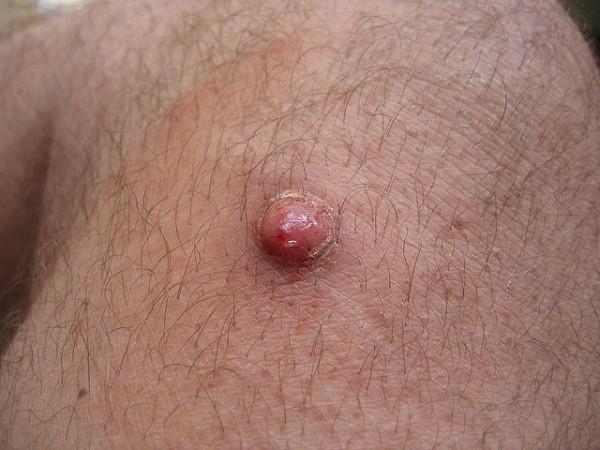
Never ignore those painful, itchy skin lesions. New research shows that they may be signalling skin cancer.
Researchers from the Temple University School of Medicine in the US found that most of the skin cancers involved itch or pain. Of the total 339 skin cancer lesions they studied, 36.9 percent appeared with itching and 28.2 percent had pain. These symptoms were more apparent in non-melanoma skin cancers like basal cell carcinoma (BCC) and squamous cell carcinoma than melanoma.
"Patients sometimes have multiple lesions that are suspicious looking, and those that are itchy or painful should raise high concerns for non-melanoma skin cancers," Dr Gil Yosipovitch, Director of the Temple Itch Center, said in a news release.
Melanoma is a cancer that starts in the cells that produce the melanin pigment. Melanoma can be identified through visible changes in the size or color of a mole. Basal cell carcinoma (BCC) is a type of cancer that starts in the basal cells in the outer layer of the skin known as the epidermis and squamous cell carcinoma starts in the squamous cells, which make up maximum of the skin's upper layers.
The findings are expected to help improve skin cancer diagnosis.
"The study highlights the importance of a simple bedside evaluation for the presence and intensity of pain or itch as an easily implementable tool for clinicians in evaluating suspicious skin lesions," the authors wrote.
Nearly 268 people diagnosed with skin cancer between July 2010 and March 2011 participated in the study. Using a visual analog scale, with zero to 10 markings, participants recorded the intensity of itch and pain in skin lesions. They also underwent a skin biopsy. Squamous cell carcinoma (46.6 percent, 42.5 percent itching and pain, respectively) and basal cell carcinoma (31.9 percent, 19.9 percent) were involved with more itching and pain than melanoma (14.8 percent, 3.7 percent). The study also revealed the prevalence of both pain and itching in some cases. The researchers also found a link between inflammation and pain or itching.
Encouraged by their findings, researchers urged dermatologists to keep a ranking scale for pain and itch to detect cancer easily. "This could increase the detection of skin lesions that are cancerous," Dr Yosipovitch said.
Findings of the study have been reported in the online edition of JAMA Dermatology.
A World Health Organization (WHO) estimate shows that between 2 to 3 million non-melanoma skin cancers and 132,000 melanoma skin cancers are reported across the world every year. Raising concerns about the reduction in ozone levels, the experts expected another 300,000 non melanoma and 4,500 melanoma skin cancer cases with a 10 percent decrease in ozone levels. They also blamed recreational exposure to the sun and sunburn for these deadly diseases.














